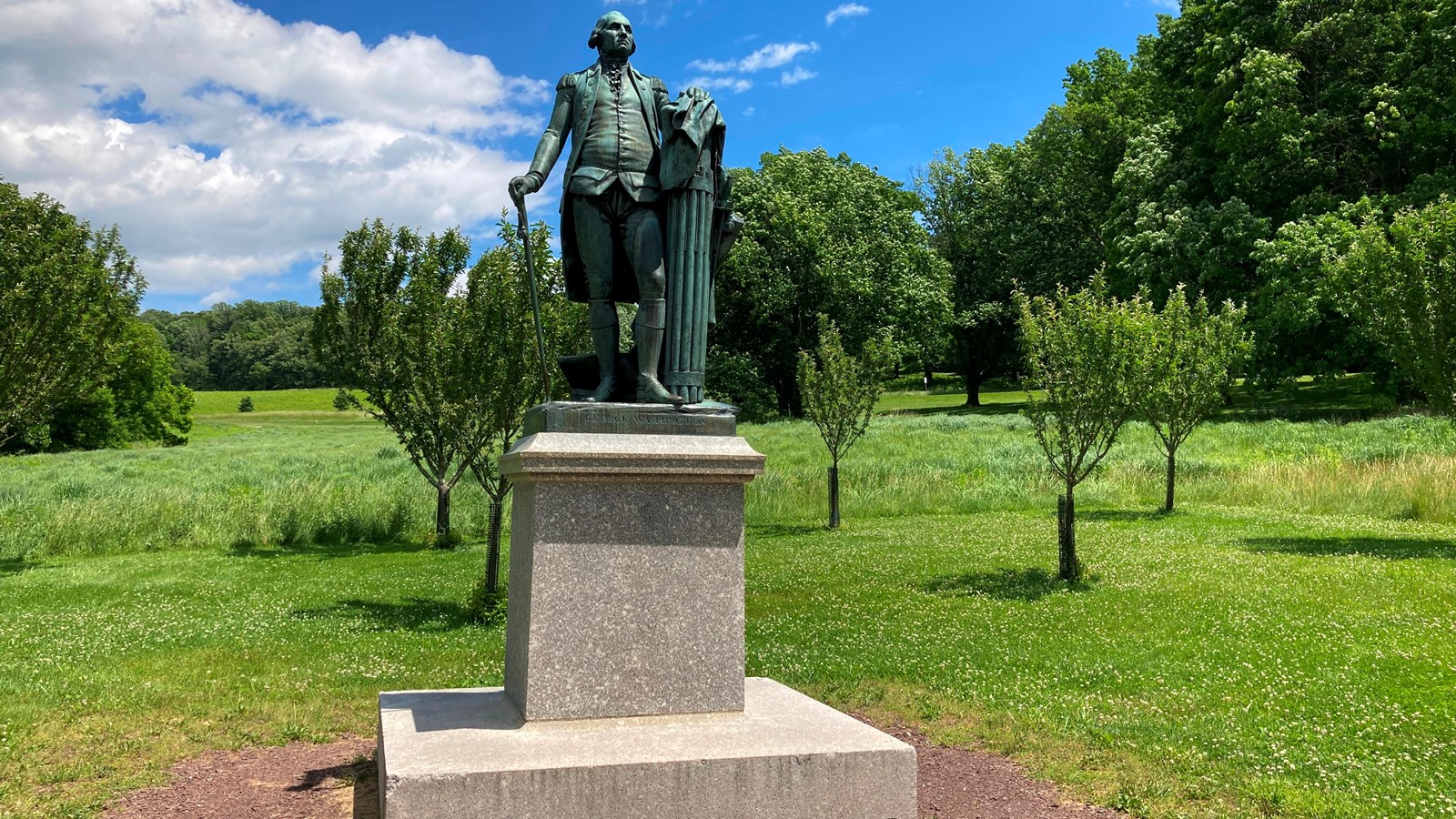Last updated: September 12, 2022
Place
Washington Statue

NPS Photo/G.Purifoy
Cellular Signal, Historical/Interpretive Information/Exhibits
This statue of George Washington, located near Washington's Headquarters at Valley Forge, is a cast bronze copy of a marble statue by French sculptor Jean-Antoine Houdon. The original statue was commissioned by the state of Virginia in 1784, completed sometime between 1788 and 1792, and to this day sits in the rotunda of the Virginia State Capital building in Richmond.
There were multiple cast bronze copies made using molds struck from the marble original, and the statue at Valley Forge was created in 1932 to celebrate the bicentennial of George Washington's birth. The statue was first acquired by the Washington Memorial Chapel and later transferred to Valley Forge National Historical Park.
Sculptor Jean-Antoine Houdon visited George Washington at his home at Mount Vernon in 1785. During the visit, Houdon sculpted a terracotta bust and made a plaster life mask of the retired general. Armed with the measurements he had taken, the face mask he had created, and the insight he had gained into Washington during his stay at Mount Vernon, Houdon returned to France to begin work on the final statue.
During the planning phase, Houdon created two different models. In the first model, Washington wears a military uniform and holds a walking stick while his sword hangs nearby. In the second model, Washington wears classical Roman garments and holds a bundle of fasces (an ancient Roman symbol that represents civil authority and strength through unity). A plow is also behind Washington.
These last two details symbolically link Washington to Lucius Quinctius Cincinnatus, a Roman leader who was given dictatorial powers to deal with a military emergency, but who relinquished power and went back to his farm after the threat was mitigated. Washington had been compared to Cincinnatus since he resigned his military commission at the end of the war, and Americans would have recognized this symbolism at the time.
Ultimately, Houdon created a piece that blended the ideas of both models. A life-sized Washington is wearing military garb and standing in front of a plow. He holds a cane instead of his sword, which hangs from a bundle of fasces containing 13 rods. This version of the statue keeps Washington true to life by using contemporary clothing, but retains the symbolism evoked by the fasces, plow, and placement of the sword.
